
SEO Tools
If you want your website to rank, you need to use some SEO (Search Engine Optimization) tools. These SEO tools will make your web pages appear on the first page when your audience searches for key phases.
Below are what I find are the best free SEO Tools.
1. Google Adwords Keyword Planner: This is the oldest and one of the best keyword tools. Many people think it’s only for Google Adwords though, and overlook it’s huge SEO value.
2. Ubersuggest: Recently acquired by Neil Patel, this is now another great keyword tool, with additional enhancements over the Keyword Planner. It includes metrics such as social and domain authority data.
3. SEMRush : One of the greatest sources of competitor data. SEMRush lets you see competitor top keywords and anchor text, so that you can update your webpages accordinly.
4. SpyFu: Another competitor resource tool, that also shows you shared keywords among you and your competitors and key areas of advantage and weakness.
5. Moz Link Explorer: A competitor resource that reveals details on backlinks that are essential for your link building campaign.
6. MozBar: A Chrome extension that shows you Domain and Page Authority according to your Google search terms. This is a great tool for digging into who is referring your competitors and giving them links.
7. Screaming Frog: Use this tool for free website audits. It shows you how to improve your technical SEO by revealing metrics like Status Codes and Indexability.
8. Yoast WordPress Plugin: One of the best WordPress SEO tools. Use this to update you meta descriptions, keyword phrases, and text readability on your WordPress Pages and Posts.
Let me share with you my daily SEO plan.
It’s important to know to increasing your webpage SEO rank is not something that happens in a day, but rather something that happens over a period of months. Even with the right keywords for your audience, it may take a year before your SEO tactics start generating revenue. Since some of the SEO tools above limit their use for their free versions, I want to share with you how I maximize use via a daily routine.
Google Adwords Keyword Planner
Okay. I may not use this tool everyday, but I do use this regularly to see which keywords are the most popular and whether or not I can still compete for a spot on the first page.
Start by typing in a keyword that you think your target audience is searching for. I’ll search for learn SEO. (Make sure that the search phrase is set on exact match, so that Google is showing you the metrics for when the exact phrase is searched for and not just for a version of the phrase.)

Then, I’ll look at the Avg. Monthly Searches and the Competition to see what all I can practically rank on the first page for. I want to find a phrase with both high Avg. Monthly Searches and low Competition. Although Competition is for how competitive a keyword phrase is when purchasing a Google Ad, it still relates to competition for organic searches. When I sort by Avg. Monthly Searches, I get the following results:
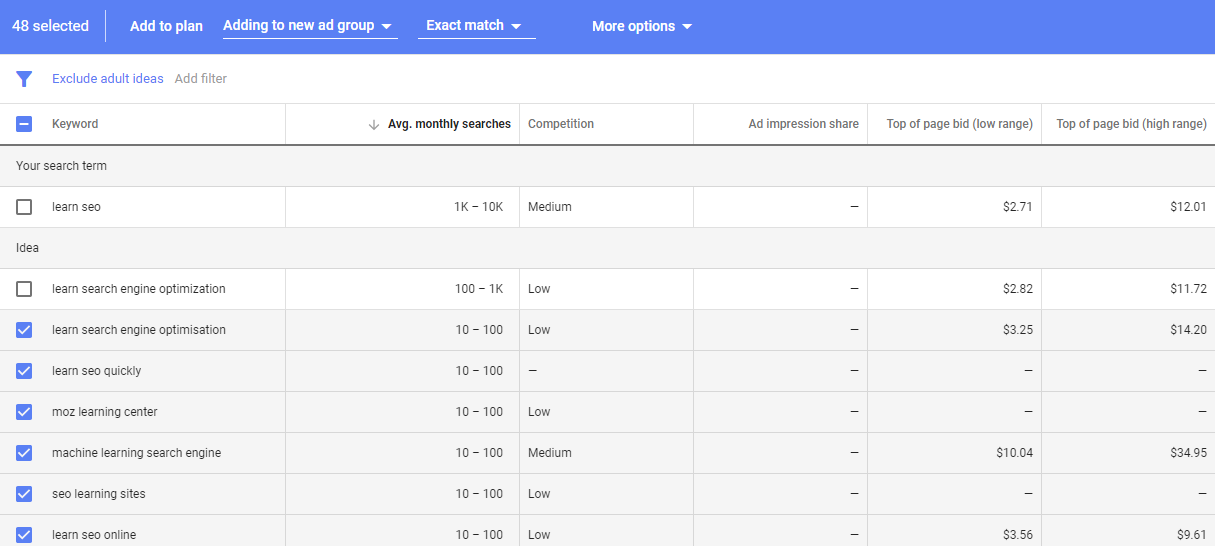
It looks like some current keyword phrases that I can use include learn search engine optimization and learn seo online.
Ubersuggest
After that, I use Ubersuggest. Here I may find additional keywords.
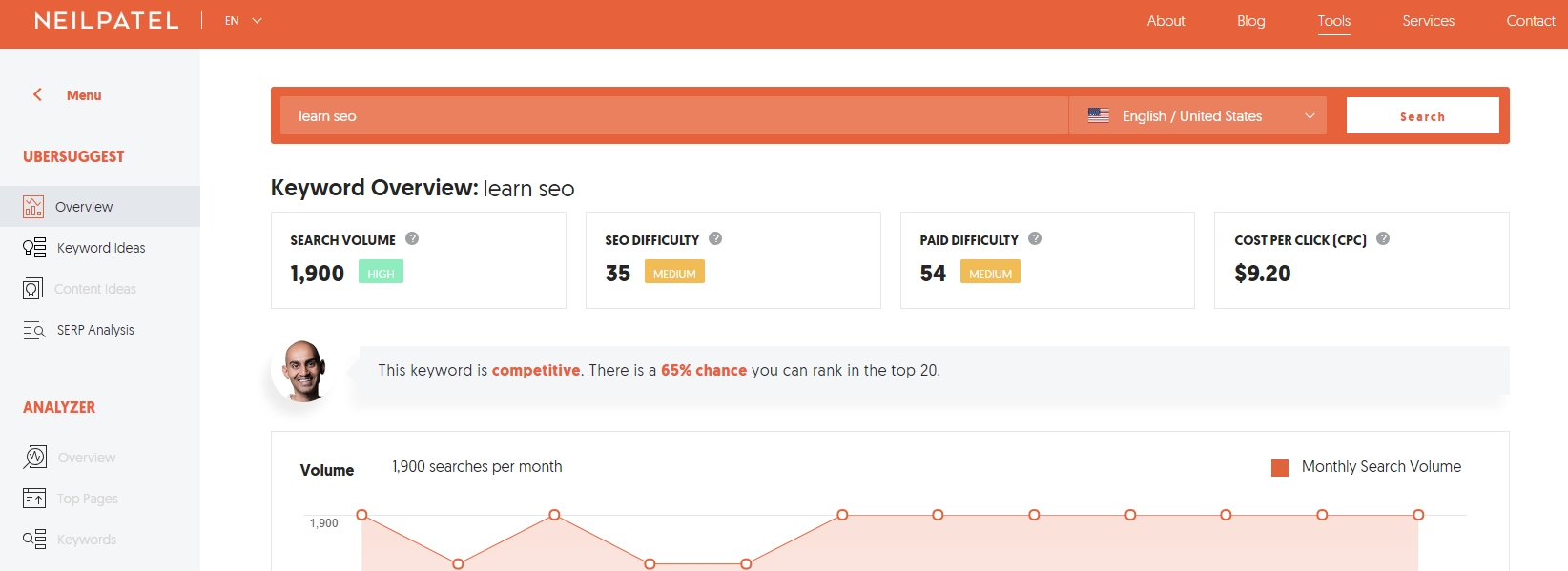
I also like the SERP (Search Engine Results Pages) Analysis section, which shows me the titles and urls of the highest rankling websites, their estimated monthly visits, social shares, and domain scores.

SEMrush
Next, I head over to SEMrush. With my free account, I can complete 10 searches a day.
I first search for my webpage to get an overview of my SEO health. Here ai can see my organic search, paid search, backlinks, and display advertising information. SEMrush also shows me my top organic keywords, my main organic competitors, my top anchors, and my referring domains.
What I really like SEMush for is the competitor research. Now, with a list of my current competitors, I will use my remaining searches to find their top keywords, anchors, and referring domains. I can use this information to update my keywords and anchors to match. Maybe I can reach out to their referring domains to link to me as well. As an example, I’ll use Salesforce.com.
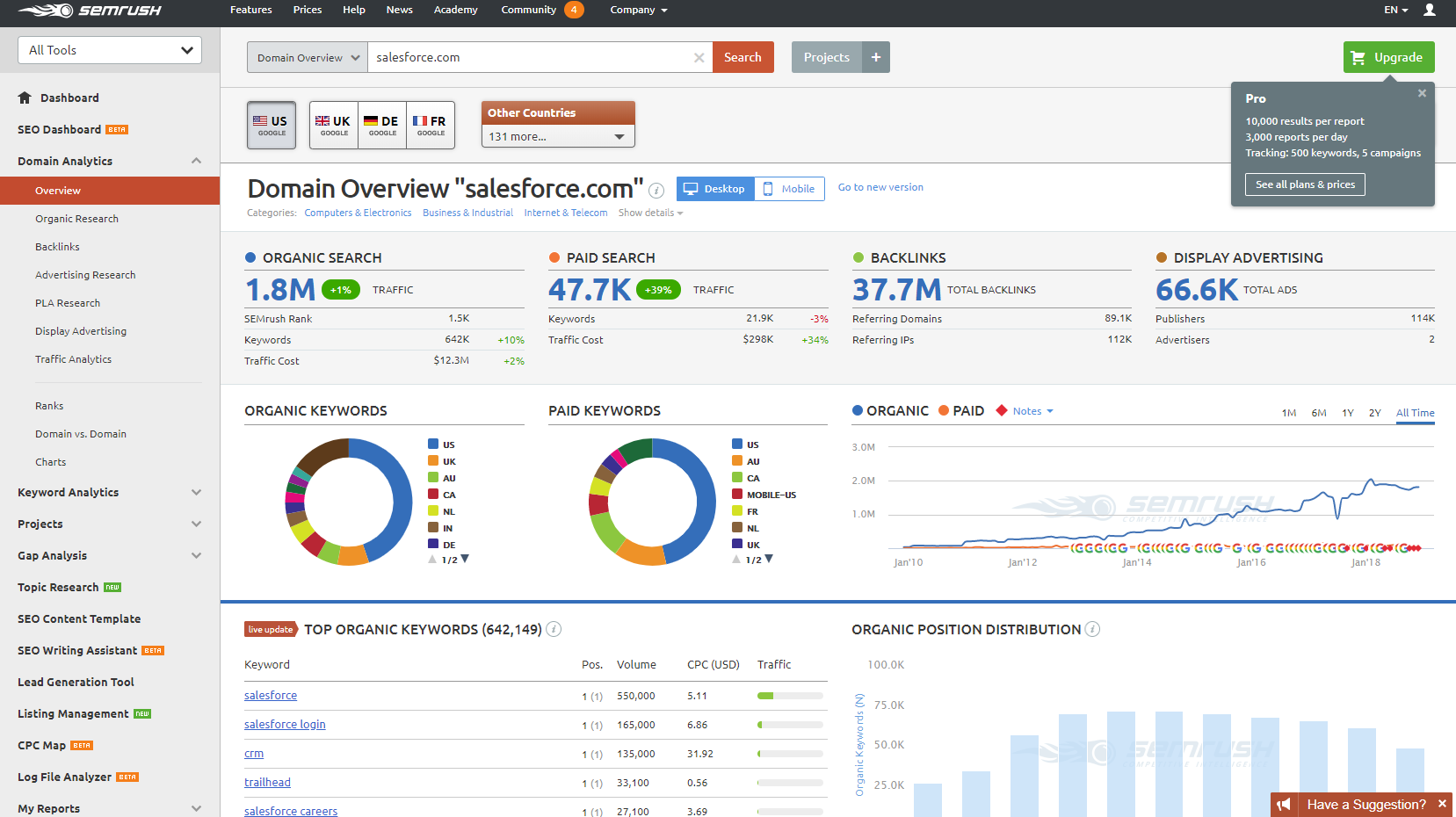
I see that salesforce careers is a top keyword, and will consider updating my content to have that same keyword. I can click on Organic Research to get more of Salesforce’s top keywords.
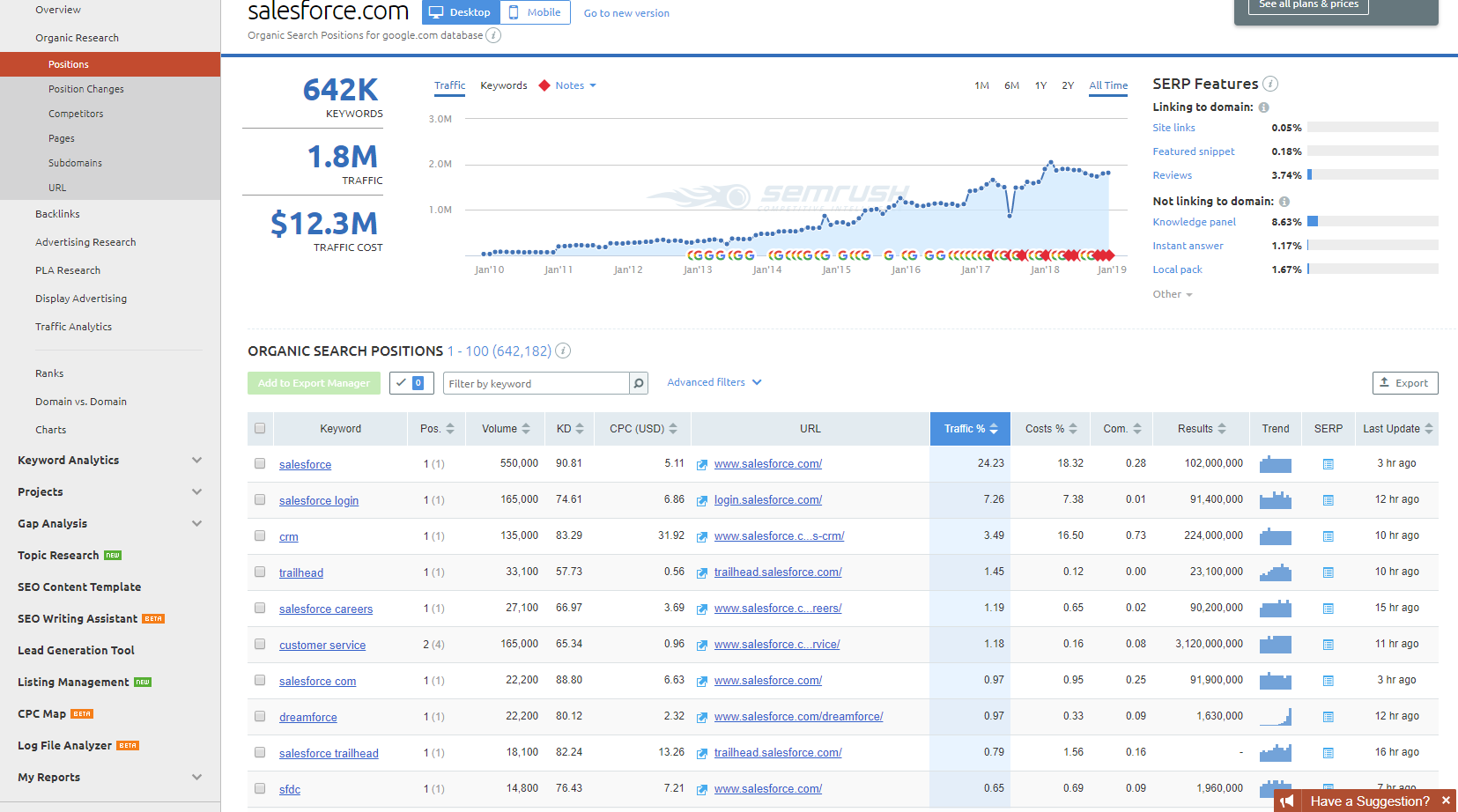
If I click on pages, I can see Saleforce’s top ranking pages. This gives me a better idea of what topics my audience is interested in reading about.
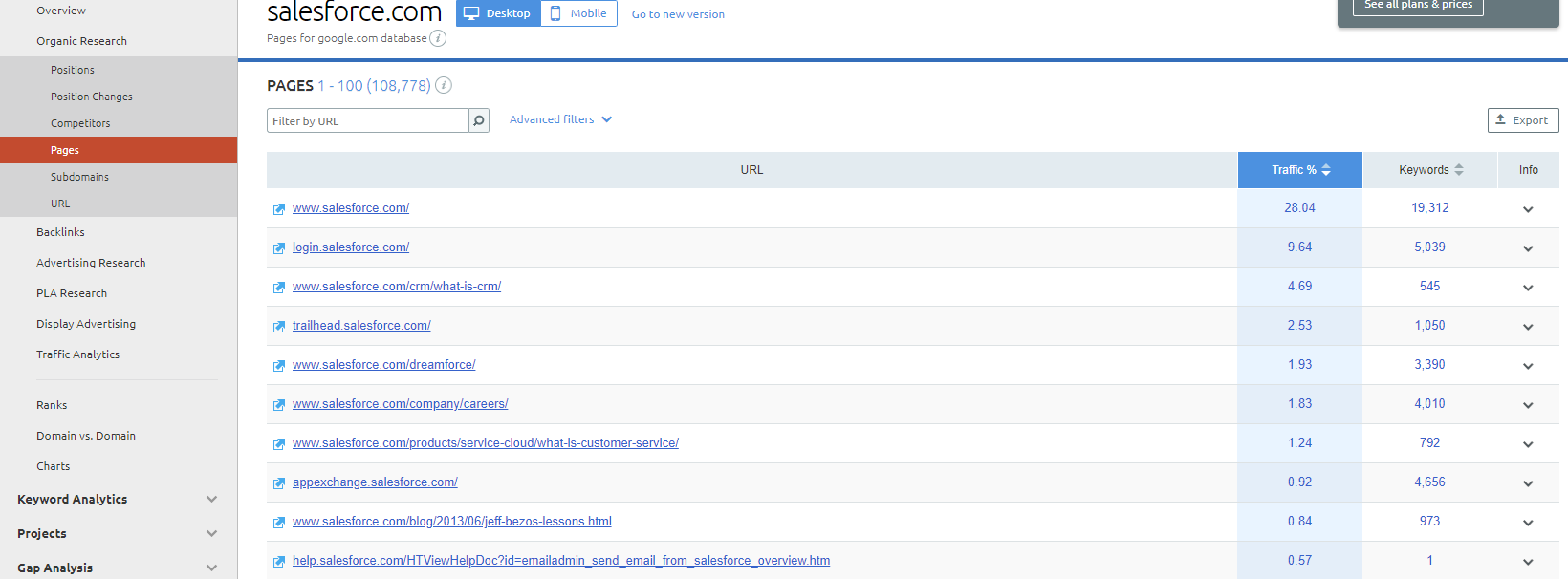
SpyFu
The third tool that I use is SpyFu. SpyFu gives me a domain overview, including information on my organic searches, paid searches, my top competitors, my top keywords, and my organic ranking history.
I also like SpyFu for the competitor research. SpyFu will tell me what Keywords I share with my competitors recommendations of new keywords to add. If I click into my weaknesses section, I see the keywords that my competitors rank for, but that I do not yet rank for. I should add these keyphrases.

If I want data on a specific competitor, SpyFu will kep me get it. As an example, I’ll use Marketo.com. When I enter it in, SpyFu shows me Marketo’s top organic and paid keywords.
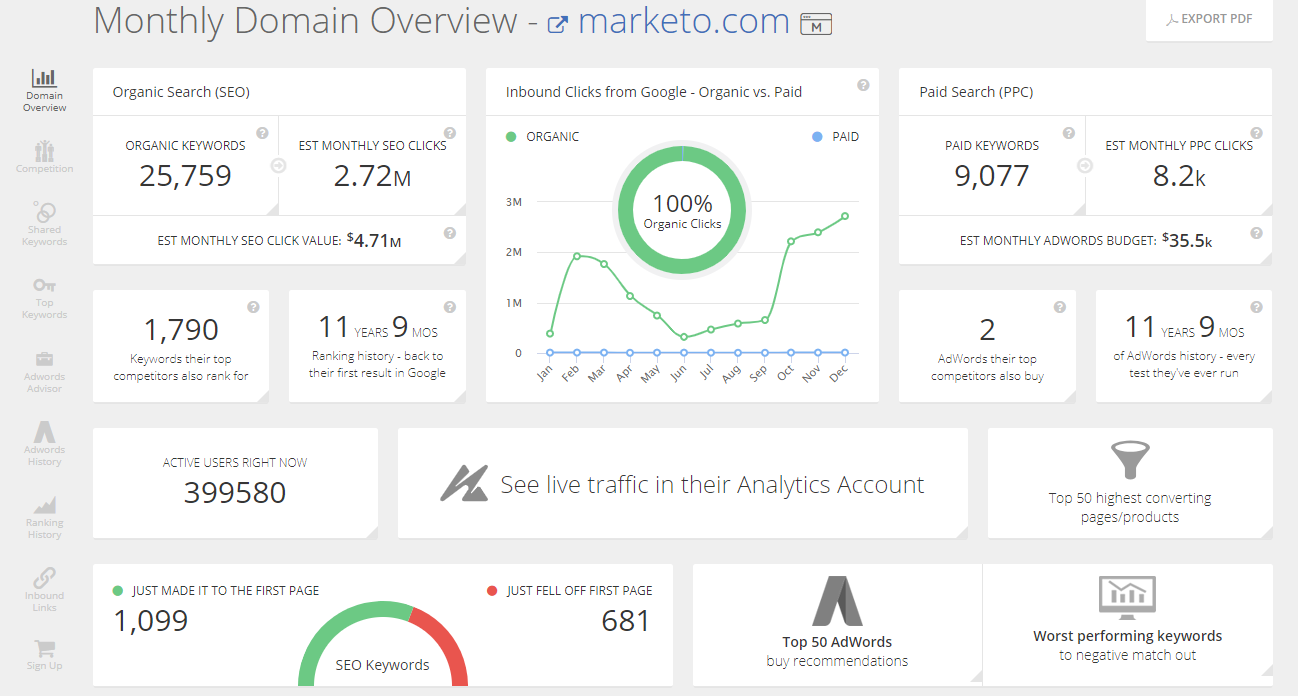
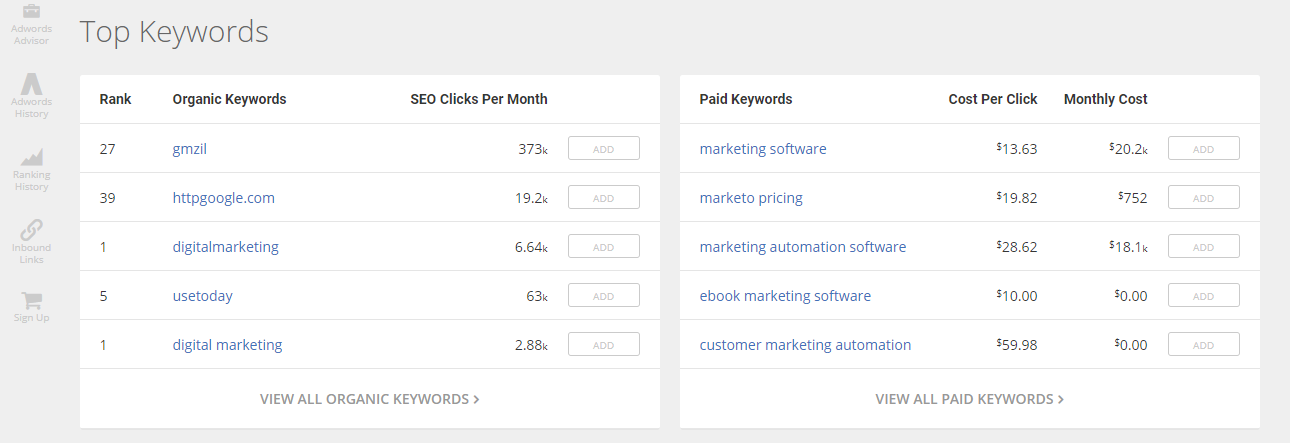
Moz Link Explorer
After SpyFu, I head on over to Moz’s Link Explorer. Moz also gives me up to 10 searches a week.
Moz’s Link Explorer also gives me great competitor information, especially on my competitor’s backlinks. As an example, I’ll use Pardot.com.

Moz shows me Pardot’s domain authority, linking domains (domains providing backlinks), inbound links (pages providing backlinks), and ranking keywords. Domain authority is important, because it shows potential ranking ability relative to competitors.
Moz also shows me Pardot’s Follow and Nofollow backlinks. These are websites that have referenced Pardot, and are my potential future linking partners as well, so perhaps I should reach out to them. I can also see Pardot’s top pages, which shows me what content my audience is interested in.
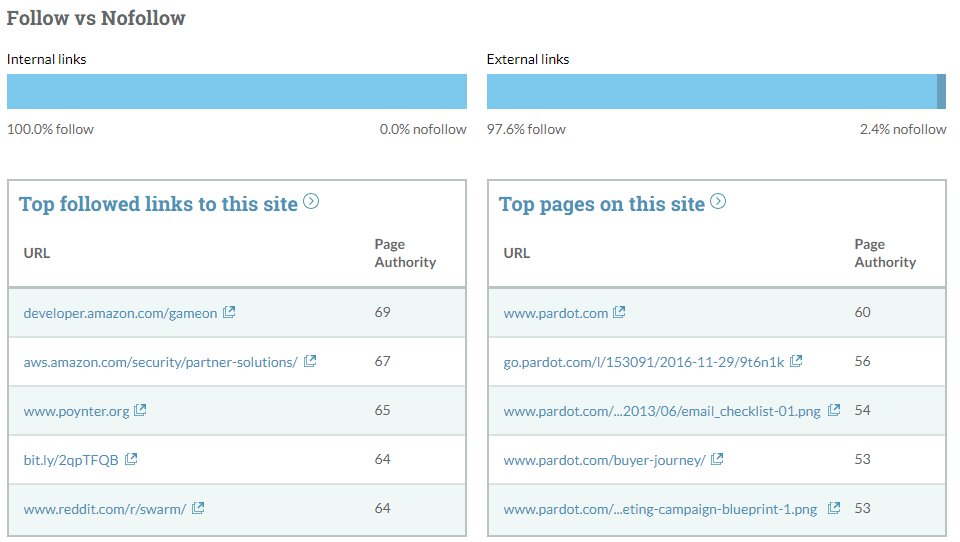
To see more inbound links or top pages, I simply need to click into the section.
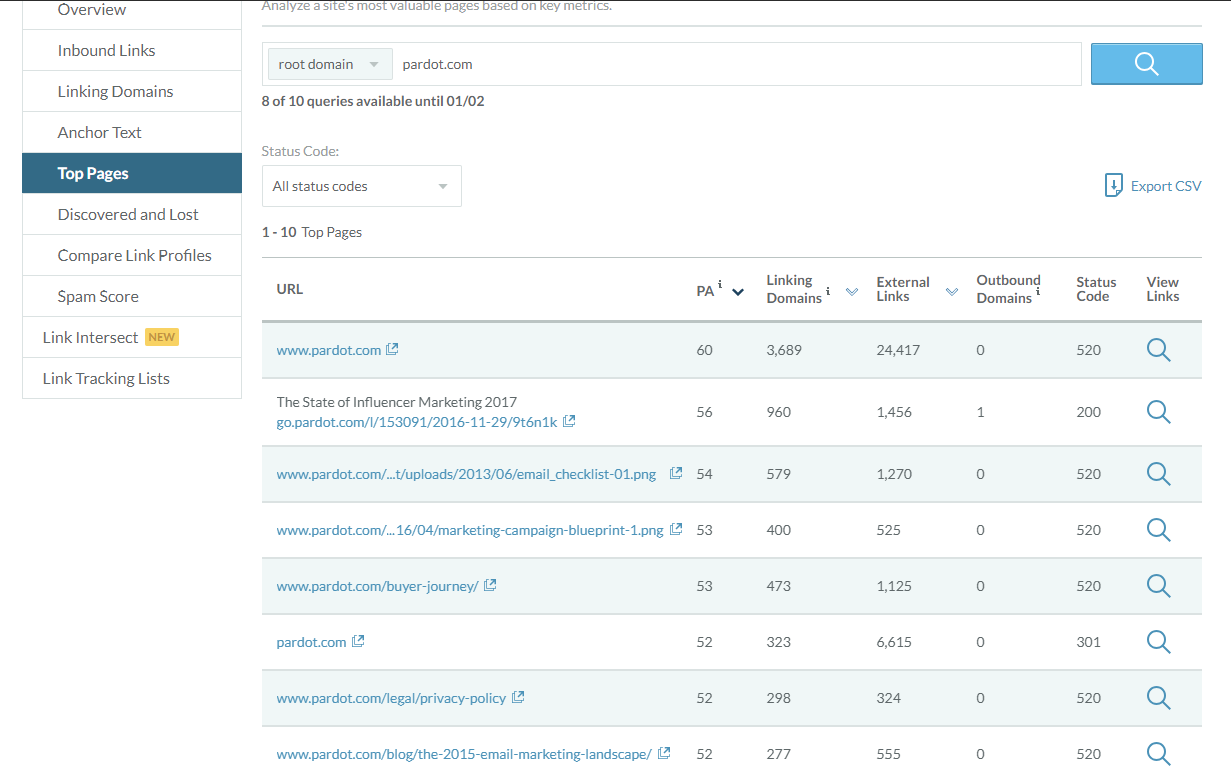
MozBar
Besides providing the Link Explorer, Moz also provides a free SEO tool called MozBar. At is a Chrome extension that shows you additional seo data for your Google searches. Just download enable it.
Let me show you how it works. As an example, I’ll use learn seo. The MozBar shows me the Page Authority, Domain Authority, and Link Analysis for each search result.

From here, I can click on Link Analysis, to find the backlinks and the top pages for those pages, so that I can build my link strategy and content.
Screaming Frog
Next, I go to Screaming Frog to check my technical seo. (Make sure that you download the SEO Spider Tool.)
I simply enter in my url and hit Start. After Scream Frog will audits my website, I export the data. Specifically, I pay attention to errors in my Status Code and Indexability. I also look for blank Meta Descriptions, H1 headings on pages and posts, and duplicate pages or titles. Lastly, I check my Word Count to make sure that important pages are long enough to be ranked (typically we want over 300 words per page).

Yoast WordPress Plugin
My last stop is the Yoast WordPress Plugin. This feature is only for those with a WordPress website. (Make sure you download the Yoast SEO Plugin via the Add New plugin feature of WordPress.)
In WordPress, I navigate to Page and Posts and make sure that all important page have a green light for SEO score and Readability score. It looks like I have some work to do on my WordPress page.

Learn more about SEO for marketers from Digital Marketing Techie
Below are my other resources related to WordPress and SEO. Stay tuned or subscribe to emails for more information:
Other great source for learning SEO include:
Moz’s Beginner’s Guide to SEO is a solid, 54 page complete guide on SEO. It’s an easy read, and within a week of reading it, you’ll be able to start building/ udpating your SEO roadmap.
Backlinko’s How to Learn SEO in 2018 is another great SEO guide. I especially like the Video SEO and Case Studies chapters.
HubSpot also has useful SEO tools and courses. Its SEO Training Course is useful for all those interested in excelling at SEO strategies.
